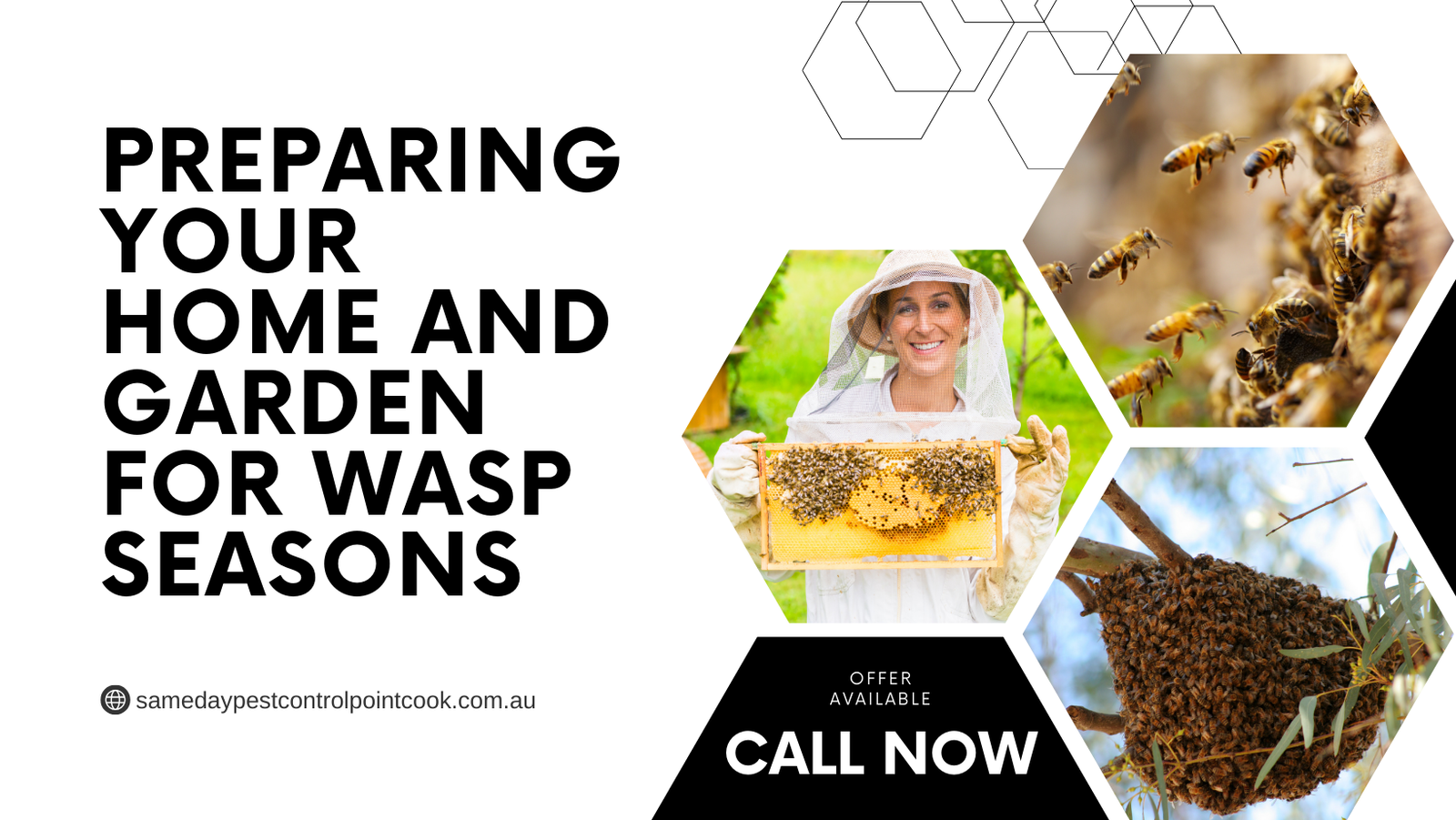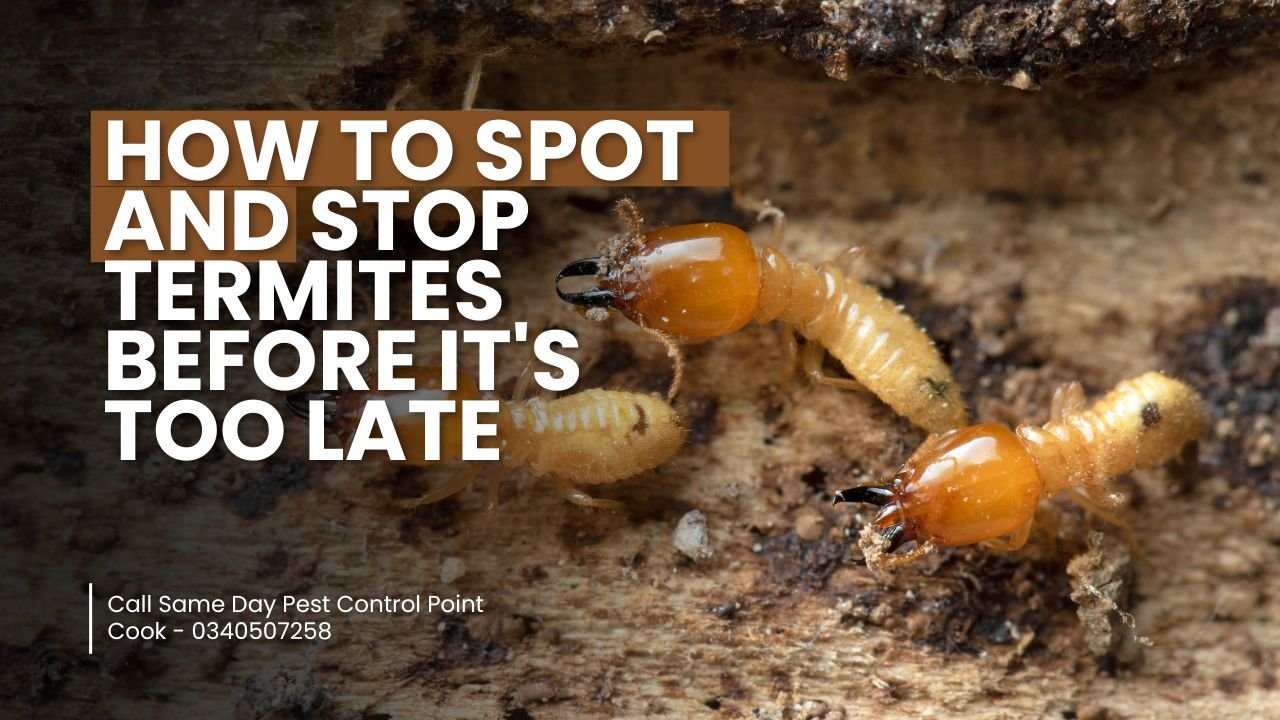As the weather warms up in Point Cook, so does the activity of these buzzing insects. Whether you’ve had trouble with them before or you’re just being cautious, it’s essential to get ready to deal with them. These little insects may seem harmless at first, but when they start to build their wasp nests near your home or in your garden, you will need to safeguard your family. Contacting a professional pest control Point Cook can be a crucial step. We’ll cover some easy steps you can take to keep your home and garden safe and enjoyable during wasp season.
Different types of wasp species found in Australia
Despite their important role in the ecosystem, they can be a source of annoyance when they build their nests near human habitation.
Paper Wasp
Paper wasps are a common sight across Australia. These social wasps construct paper nests from a paper-like material, which they create by chewing wood fibres mixed with saliva. They have narrow waists, slender bodies, and long legs. Paper wasps are beneficial because they prey on a variety of pest insects. This allows you to perform natural pest control in your gardens. But this species becomes aggressive when their nests are threatened, and their sting can be painful. If you are an allergy-prone person, you must stay clear of these wasps.
European Wasp
The European wasp is an introduced species in Australia. Most parts of Australia are home to this species. Unlike paper wasps, European wasps are highly aggressive foragers, easily recognisable by their yellow and black-striped appearance. They build their nests in underground burrows, wall cavities, and roof spaces in urban areas. They especially like to scavenge around human habitation. These wasps are attracted to sugary substances like fruits and soft drinks. Their sting is painful and can trigger severe allergic reactions in some individuals.
Mud Dauber
Mud daubers are solitary wasps found throughout Australia. They have elongated bodies and narrow waists. Unlike social wasps, mud daubers are solitary nest builders, constructing their nests from mud, hence their name. They build their nests in sheltered locations, such as under eaves, in sheds, or on walls. Mud daubers are beneficial insects because they prey on spiders, particularly black widow spiders, which they use as food for their larvae. They are generally non-aggressive towards humans. They may sting if they feel threatened.
How to prepare your home and garden for wasps
Identifying Wasp Nests: The first step in preparing for wasp season is to identify any existing nests around your home and garden. Wasps typically build their nests in sheltered areas, such as under eaves, in trees, or even inside walls and attics. Keep an eye out for paper-like structures with hexagonal cells, which are characteristic of wasp nests.
Inspect Your Property: Regularly inspect your home and garden for any signs of wasp activity, such as nests, particularly in areas where they are likely to build, such as eaves, roof overhangs, trees, and bushes.
Seal Entry Points: Seal any cracks, gaps, or openings in your home’s exterior, including around doors, windows, vents, and utility entrances. This can help prevent wasps from entering your home to build nests.
Remove Potential Nesting Sites: Remove or relocate any items in your yard that could attract wasps or provide suitable nesting sites, such as unused furniture, piles of wood, or overgrown vegetation.
Keep Garbage Bins Closed: Ensure that your garbage bins have tight-fitting lids and keep them closed at all times. Garbage can attract wasps looking for food sources.
Cover Food and Sweet Scents: When dining or having outdoor events, keep food and beverages covered to prevent attracting wasps. Also, avoid leaving sweet-smelling substances, such as ripe fruits or sugary drinks, exposed for long periods.
Use Wasp Traps: Set up commercial wasp traps in your yard, especially near areas where wasps are commonly seen. These traps can help capture and control wasp populations.
Plant Wasp-Repelling Plants: Certain plants, such as mint, basil, marigolds, and wormwood, are known to repel wasps. To deter wasps from nesting, consider planting them around your home and garden.
Hang Fake Nests: Wasps safeguard their territory and may normally avoid areas where they believe another colony already resides. Hang up fake wasp nests in strategic locations to discourage new colonies from establishing themselves.
Be Cautious with Bright Colours: Avoid wearing brightly coloured clothing or floral patterns, as these can attract wasps. Stick to neutral colours when spending time outdoors.
Seek Professional Help: If you have a severe wasp problem or are allergic to wasp stings, consider contacting a pest control professional for assistance in safely removing nests and controlling the population.
By implementing these measures, you can help reduce the likelihood of wasps nesting in your home and garden, creating a safer and more enjoyable outdoor environment.
Conclusion:
Preparing your home and garden for wasp season doesn’t have to be a daunting task. By following these simple steps, you can enjoy the warm weather without worrying about unwanted wasp visitors. Remember to stay vigilant, keep your outdoor areas clean and tidy, and don’t hesitate to seek professional help if needed. With a little effort and some preventative measures, you can keep wasps at bay and enjoy a sting-free summer!




